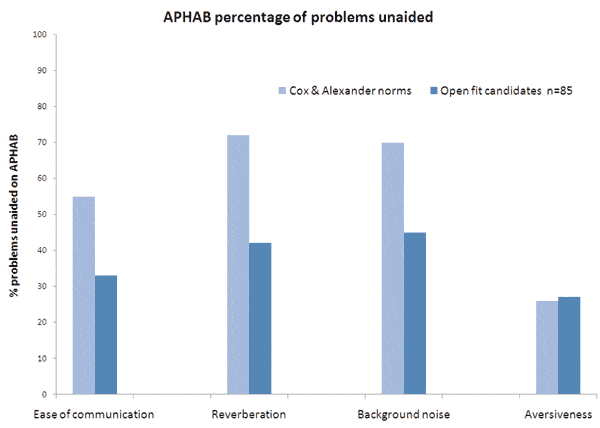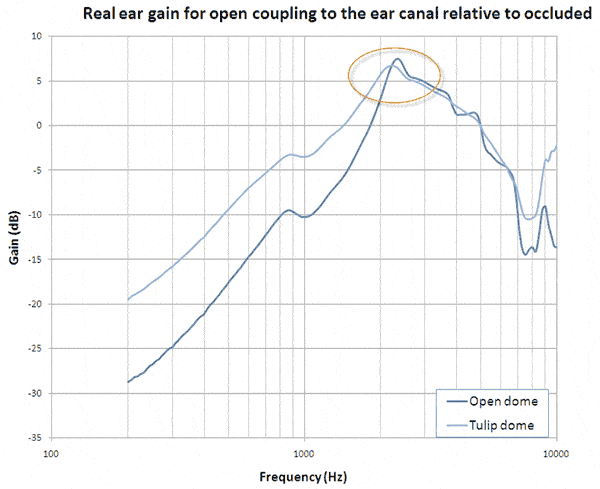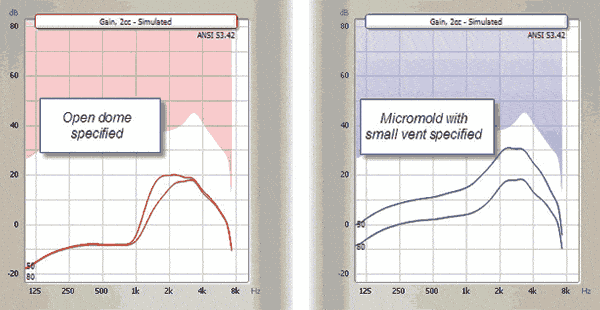Tips and common-sense considerations for open-fit devices
Much of the sea change in BTE hearing aids—a style that increased in usage from about 20% in 2000 to over 60% today—is due to open-fit and feedback suppression technology. What have we learned relative to fitting methods since the widespread introduction of open-fit devices in 2003? Here are some dos and don’ts to keep in mind…
“Since the sixties, everything has been said and demonstrated regarding the question of open fittings…”1
This brash assertion opens an article from the late 1980s that reviews methods of coupling hearing instruments to ears with minimal occlusion of the ear canal. In fairness, it was indeed the case that much had been investigated on the topic of open fittings in the previous two decades. Although primarily dealing with the acoustics of open fittings, issues such as candidacy and benefit were also studied. A common thread in this early literature was that acoustic feedback constituted the main limitation of open fittings and was a key reason that they were relegated to special cases.
Early in the 21st century, two hearing instruments designed specifically for open fittings became commercially available. One of these was the ReSoundAIR from GN ReSound (2003), which was a small BTE-style device coupled to the ear with thin acoustic tubing and non-occluding eartips. The other was the Vivatone (2004), also a small BTE, but with the receiver encased in a protective sheath and placed in the ear of the wearer with a wire connection to the device. While there had been a few marketed devices intended for open fittings prior to these, no others had such a major impact on the hearing industry.
Within a few years, virtually all hearing aid manufacturers offered products based on one of these concepts; today, the open-fit hearing aid appears to be here to stay. The proliferation of open-fit devices has also upset the balance of hearing aid styles sold away from custom in-the-ear models—respondents to a recent US survey stated that 41.6% of all hearing aids they dispensed the previous year were open-fit mini-BTEs.2
Why have open fittings taken hold now, while being relegated to a small niche previously? The novelty and cosmetic appeal of the thin tube and receiver-in-the-ear (RIE/RITE) styles certainly played a role. These came as a breath of fresh air, looking sleek and modern and more-or-less disappearing on the ear.
Another reason for the broad acceptance of open-fit devices was the availability of feedback cancellation. This technology extended the fitting range to include as candidates a vast number of people who walk into a typical hearing aid fitting practice. An audit of patient audiograms for one multi-site practice showed that, of more than 2,000 patients fit with amplification for the first time, 57% qualified as open-fit candidates, with bilateral hearing thresholds better than 40 dBHL at 250 and 500 Hz, and no worse than 70 dBHL from 2 kHz and above (personal communication with M. Laureyns).
We hypothesize that a main reason for the surge in popularity of open fitting is that current open-fit products offer solutions to the “side effects” of hearing aids for those with mild-to-moderate high frequency hearing losses, which tip their cost/benefit analyses in favor of amplification. In addition to their cosmetic appeal, open-fit hearing aids are generally physically comfortable to wear, eliminate occlusion-related complaints, and reduce the occurrence of feedback. In our clinical experience, patients with high frequency hearing losses typically did not perceive the benefits of conventionally fitted amplification as outweighing the drawbacks, and we considered them to be “hard-to-fit.”
Mecklenburger and Joergensen3 explored whether candidates for open-fit hearing aids exhibit less potential for benefit of amplification than a normative group encompassing a broader range of hearing losses as determined by a typical outcome measure. They compared the Abbreviated Profile of Hearing Aid Benefit (APHAB) results for 85 individuals with mild-to- severe high frequency hearing losses who participated in clinical trials with various open-fit devices to normative data from Cox and Alexander.4 As shown in Figure 1, the results clearly indicated that individuals who meet audiometric open-fit candidacy criteria generally have less to gain in terms of benefit of amplification, as the percentage of problems experienced was significantly less on all of the communication-related subscales. This finding implies that these candidates are less likely to put up with much inconvenience, bother, or discomfort to get those benefits.

FIGURE 1. A comparison of unaided percentage of problems for open fit candidates versus a group of individuals with a wider range of hearing losses suggests that the open fit candidates have less potential benefit of hearing aids, and may therefore be less tolerant of negative aspects of hearing aids.
As the open-fit hearing aid category nears its 10-year anniversary, hearing care professionals are probably feeling pretty comfortable fitting them, and rightly so. Data from MarkeTrak VIII indicate that overall satisfaction with mini-BTE hearing aids—many assumed to be open fit—has reached new consumer groups with milder hearing losses, and results in higher overall satisfaction ratings than other hearing aid styles.5
This paper takes the opportunity to review a couple of important “dos” and “don’ts” in selecting and fitting this game-changing style of hearing device.
Do Consider Open Fitting in Terms of the Venting Provided—Not the Style of the Device
What is an open fitting? Because the new generation of open-fit products has been so strongly associated with thin-tube and receiver-in-the-ear styles, many consider any device falling into either of these categories to be “open fit.” However, either of these types of hearing aids can also be fit with either a custom micromold or occluding plastic dome, thereby making them anything but open. A more useful way to define open fitting is in terms of low frequency acoustics: If low frequency energy can pass freely in and out of the ear canal when the hearing aid is worn, then it is an open fitting. Defined in this way, any style of existing or not-yet-invented hearing aid can be an open fitting as long as it meets the criterion of allowing low frequencies to enter and leave the ear canal unhindered.
Open fitting impacts the sound pressure levels achieved in the ear canal in two important ways. For one thing, real-ear low frequency gain will be negligible, and this is discussed in further detail below. Another significant effect of open fitting is an enhancement of real-ear gain in the region of the unaided ear canal resonance.
An in-house study with 20 adult participants sought to quantify this effect in order to tune factory settings for open-fit hearing aids, and to more accurately simulate real-ear gain in fitting software for this type of fitting. In this investigation, a device was programmed to provide a fixed amount of amplifier gain, but was coupled to the participants’ ears with different types of open domes and a fully occluding eartip. As shown in Figure 2, the real-ear gain of the open domes compared to the occluded condition showed an increase of 6 to 7 dB around the frequency of the open ear canal resonance. This is consistent with results reported by Mueller and Ricketts,6 who found an enhancement ranging 5 to 10 dB in the 2 to 4 kHz frequency range with hearing aids fit as open relative to occluded with the same amplifier gain.
The implication of this finding is that open fittings will require somewhat less gain in this frequency region to attain equivalent real-ear sound pressure level to an occluding fitting. For many open-fit hearing aids on the market, this is automatically taken into account behind-the-scenes in either the gain prescription, the frequency response of the device, or both. For conventional devices that can be fit as open, such as custom hearing aids with very large vents, this is not typically accounted for, and is one more good reason to perform verification measures.
Don’t Expect Low Frequency Gain from Any Open-fit Hearing Aid
One of the greatest advantages of open fitting is that self-generated low frequency sound can escape from the ear canal, thus avoiding the perception of a boomy-sounding own voice or unbearably loud crunching when chewing. Low frequency sounds that are audible to the user can also enter the ear, preserving important cues to localization and contributing to natural sound quality for users with good low frequency hearing.
It is also clear from Figure 2 that the inability to build up low frequency sound pressure levels in the ear canal also means it is unrealistic to achieve low frequency gain for hearing loss compensation in this region. To account for the severe roll-off below about 800 Hz, substantial low frequency gain exceeding the capabilities of the small receivers used in hearing aids would be necessary. Attempting to accomplish this would lead to both distorted sound quality and excessive current drain, as it would involve driving the receiver into saturation during most of its operating time.

FIGURE 2. Hearing aids that are coupled to the ear with a non-occluding eartip provide a small boost in real ear gain at the resonant frequency of the ear canal, and significantly reduce real ear gain in the low frequencies compared to an occluding coupling and the same amplifier gain.
Consequently, manufacturers typically roll off amplifier gain in the low frequencies when an open fitting is specified. This is contrary to the popular belief that low frequency gain is boosted to compensate for the leakage of low frequency energy with an open fit. Figure 3 illustrates how these acoustic factors may be taken into account depending on whether the hearing aid is fit open or closed (occluded). This example shows the coupler gain necessary to achieve 20 dB flat insertion gain for the same RIE hearing aid specified to be fit with an open dome (right) or with an occluding dome or micromold (left).

FIGURE 3. Many manufacturers compensate for open fittings by adjusting the hearing aid frequency response to provide less gain both at low frequencies and at the average ear canal resonant frequency.
What does all this mean for the dispensing professional? For one thing, it is important to understand and follow the manufacturer’s guidelines for telling the fitting software module that the fitting is open. For some manufacturers, this means defining acoustic parameters at the start of the fitting. Other manufacturers, including ReSound, ask the fitter to “reconfigure” the hearing aid as either open fit or closed fit. Once the fitting software has this information, it will adjust the amplifier gain behind the scenes to account for both the extra high frequency gain that is afforded by the open fit, as well as the inability of the device to provide low frequency gain for the open condition.
As mentioned, the manufacturer may account for the change in acoustics by the gain prescription, as well as the frequency response of the device. For example, the ReSound philosophy is that the sound pressure level required at the tympanic membrane to achieve audibility does not depend on how the sound gets there. This means that the proprietary gain prescription for our hearing aids is not dependent on the device or the way the device is coupled to the ear.
However, some manufacturers do alter their prescriptions for open fittings based on the idea that combining direct and amplified sound affects gain preferences. An example of this is shown in Figure 4, which shows 2cc coupler gains for a right and left fitting of the same RIE device to the same mild-to-moderately sloping audiogram. The difference between the fittings is that a micromold with a small vent was specified for the left ear, and an open dome for the right. For this particular product, both the gain prescription and the frequency response are altered for the open fit, resulting in much less gain for this condition.

FIGURE 4. Some hearing aid manufacturers prescribe less gain for open fit products in addition to adjusting the frequency response of the device when the fitting is specified as open versus occluded. In this example, the same hearing aid and the same audiogram are used for right and left ear, but the right ear is specified to be open fit, and the left ear as occluded.
Do Verify Open Fittings
At this point, two things should be clear:
- The acoustics of an open fitting affect the real-ear gain relative to a conventional, occluding fitting.
- Manufacturers take different approaches in how they account for these factors.
For conventional hearing aids that can be fit open with large venting, these effects might not be compensated at all. Add to that the individual variation of how hearing aids perform in ears, and the fact that simulated real-ear gains in manufacturers’ fitting software may overestimate actual real-ear gains,7-10 and it would seem to be in the best interest of patients to perform verification measures.
Verification is the most straightforward way of finding out whether prescribed targets are met, and how amplified sounds fit into the patient’s residual dynamic range without having to delve into each manufacturer’s specific approach to open fittings.11 Output measures using live or recorded speech are particularly helpful in demonstrating for the patient what the hearing aid is doing, as the perceptual effects of an open-fit product can be subtle.
As representatives of a manufacturer of open-fit hearing aids, the authors have often been asked by clinicians how they should change verification protocols for this type of fitting. In our clinic, the only accommodation we make to verification of open fittings is to use the equipment manufacturer’s “open” feature. When enabled, this feature will use a “modified substitution method” to adjust the signal presentation level, and disable the reference microphone on the probe during the actual measurement.
The rationale for this is that, because there is less damping of the amplified sound leaking from the ear canal when it is not occluded, there is a danger of elevated sound pressure level present at the measurement equipment’s reference microphone. This will cause the automatic gain control of the probe microphone equipment to decrease the signal level, resulting in erroneous calculation of actual gain by the equipment—and misleading representation of output.
Since current open-fit hearing aids virtually always have a feedback cancellation algorithm activated, the chances of amplified sound from the ear canal influencing the signal presentation level are even greater. Lantz and colleagues12 reported an average underestimation of real-ear insertion gain (REIG) of more than 15 dB in the 3 kHz region when open-fit hearing aids with feedback cancellation were measured at maximum gain-before-feedback with the reference microphone active during the measurement (concurrent equalization). Mueller and Ricketts6 found concurrent equalization to cause a significant issue only when REIG gains exceeded 25 dB, but still recommended using the modified substitution method when available.
Using a stored equalization method might be expected to yield less reliable results, as the test signal level would not be adjusted during the measurement to account for movement of the patient’s head or torso. However, the stored equalization method has been shown to provide equivalent results to using concurrent equalization of the test signal.13
Don’t Expect Unlimited Gain Without Feedback or Artifact from Any Open-fit Hearing Aid
Feedback cancellation sounds incredibly simple: analyze how amplified sound from the ear canal is modified by the pathways it takes back to the hearing aid microphone(s), subtract this from the input to the hearing aid, and voila! No more feedback. In reality, this type of processing is both complex and resource-intensive.
For one thing, the resolution of the analysis of feedback pathways is imperfect. Any such system has only a limited number of data points available to represent the signal to be cancelled, and must therefore compromise on a “best fit” model of it. While the feedback pathways for some fittings may be fairly easy to model with one prominent peak, others may have multiple peaks, leading to a suboptimal feedback path model and worse feedback cancellation performance.
Another consideration is that, in order to conform to the processing resources currently available in digital hearing aids, it is possible only to model effects in the immediate vicinity of the hearing aid and ear. Most clinicians have probably fit patients where no feedback was present at the fitting, but as soon as the patient left the fitting room, or sat in their car, or visited the restroom, feedback was suddenly an issue. This is because room acoustics also influence the feedback path, but the system does not have enough processing power to take these effects into account. Therefore, performance of feedback cancellation can be different depending on where the user happens to be.
Two other challenges for feedback cancellation algorithms are that they must try to distinguish between feedback and externally occurring sounds that could be feedback but are not—such as beeping and musical sounds. And they must do this in an environment where the feedback path can change by 20 dB or more in a second, as users touch their hair, put phones up to their ears, move their heads, etc.
Feedback cancellation algorithms have numerous parameters and operational principles that differ among manufacturers. These include, but are not limited to:
- Methods for feedback path analysis;
- Time constants;
- How much the system is allowed to adapt to feedback path changes;
- Whether the cancellation adapts or is static; and
- Whether the cancellation operates from a reference measurement.
In addition, many manufacturers have layered feedback cancellation techniques with algorithms that reduce gain when feedback is likely, or that turn off feedback cancellation when feedback is unlikely. These supplementary methods are designed to reduce side effects, such as feedback occurrence or entrainment artifacts in situations where feedback cancellation processing fails.
The maximum insertion gain-before-feedback for an open fitting with no feedback cancellation at the most feedback critical frequency range around 3000 Hz averages 15 dB for an ITC to 23 dB for a BTE.14 Our own data for RIE styles show similar insertion gain-before-feedback to the reported BTE data. Allowing for feedback safety margin, this amount of usable gain limits the open fitting to those with only mild high frequency hearing losses. Feedback cancellation can be expected to add approximately 10 dB of gain, substantially widening the audience for open-fit hearing aids.
It is not unusual to see claims of added stable gain with feedback cancellation exceeding 20 dB in manufacturer literature. It should be noted that such claims are based on comparisons of stable gain with and without feedback cancellation turned on in a static situation, and do not represent the added gain that will be usable in real-world, dynamic conditions.
Galster and Galster15 describe such a procedure for evaluating added stable gain with feedback cancellation. This probe microphone-based procedure can be a powerful tool during verification of open fittings to show patients what they’re getting from the hearing aid processing. It can also be a good learning tool for the dispensing professional to understand why some manufacturers’ hearing aids never seem to feed back—this is most often related to the low gain prescribed for first-fits rather than the feedback cancellation.
Clinicians are strongly encouraged to try this procedure, and in general to utilize probe microphone measures for verification, trouble-shooting user complaints, and counseling. At the same time, it is important to be aware that the procedure described by Galster and Galster15 does not provide easily interpreted data to benchmark the performance of different manufacturers’ feedback cancellation systems against each other, as it does not take into account any of the factors that will disguise what can be attributed to the feedback cancellation per se. These include gain prescription as mentioned, but also compression, gain constraints, and feedback-detection gain reduction processing.
This test also gives no indication of how the feedback cancellation will function dynamically—which is most important for real-world use of the hearing aid. For example, a system with no limitations on adaptation to different feedback paths will yield a high added stable gain measurement, but will also be likely to create entrainment artifacts in use as it tries to cancel non-feedback sounds. This could mean that the hearing aid doesn’t feed back when cupped in a hand, but might create unbearable sound quality artifacts when listening to music.
Summary
The acoustics of open-fit hearing aids should be taken into consideration when fitting, and are handled differently by manufacturers. In addition, this type of fitting depends on feedback cancellation techniques to make them useful for a broad number of users. Verification measures on open fittings provide reliable and helpful ways to check how amplified sound fits into the user’s dynamic range of hearing, to learn about the effectiveness of feedback cancellation, and to counsel users on how their hearing aids work to help them hear better.
References
- Courtois J, Johansen P, Larsen B, Christensen P, Beilin J. Open molds. In: Jensen JH, ed. Hearing Aid Fitting: Theoretical and Practical Views. 13th Danavox Symposium. Copenhagen: Stougaard Jensen; 1988:175-201.
- Johnson E. Practitioners give high marks for user benefit to open-canal mini-BTEs. Hear Jour. 2008; 61(3):19-28.
- Mecklenburger J, Joergensen SN. Comparing Apples to APHABs: rating benefit in open fittings. Presented at: American Academy of Audiology annual AudiologyNOW convention; 2009; Dallas.
- Cox R, Alexander G. The Abbreviated Profile of Hearing Aid Benefit. Ear Hear. 1995;16:176-186.
- Kochkin S. MarkeTrak VIII: Mini-BTEs tap new market, users more satisfied. Hear Jour. 2011; 64(3):17-24.
- Mueller G, Ricketts T. Open canal fittings: ten take-home tips. Hear Jour. 2006;59(11):24-39.
- Hawkins D, Cook J. Hearing aid software predictive gain values: how accurate are they? Hear Jour. 2003;56(7):26-34.
- Aarts NL, Caffee CS. The accuracy and clinical usefulness of manufacturer-predicted REAR values in adult hearing aid fittings. Hearing Review. 2005;13(11).
- Killion M. Myths about hearing aid benefit and satisfaction. Hearing Review. 2004;11(9):12-17.
- Aazh H, Moore B. The value of routine real ear measurement of the gain of digital hearing aids. J Am Acad Audiol. 2007;18:653-664.
- Stender T, Appleby R, Hallenbeck S. V&V and its impact on user satisfaction. Hearing Review. 2011;18(4):12-21.
- Lantz J, Jensen OD, Haastrup A, Olsen S. Real-ear measurement verification for open, non-occluding hearing instruments. Int J Audiol. 2007; 46(1):11-16.
- Shaw P. Are real-ear measurements (REM) accurate when using the modified pressure with stored equalization (MPSE) method? Int J Audiol. 2010;49(6):463-466.
- Dillon H. Hearing Aids. Boomerang Press; 2001.
- Galster J, Galster E. How to compare feedback suppression algorithms in open canal fittings. Hearing Review. 2010;17(11):38-41.
Correspondence can be addressed to HR or Jennifer Groth, MA, at .
Citation for this article:
Groth J, Mecklenburger J. Dos and don’ts of open fittings. Hearing Review. 2011;18(5):12-23.







